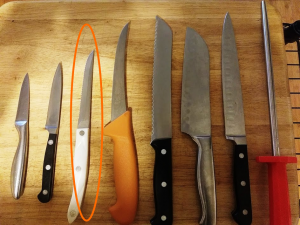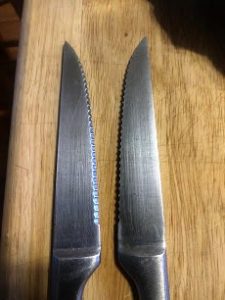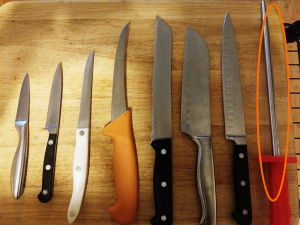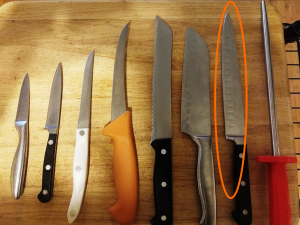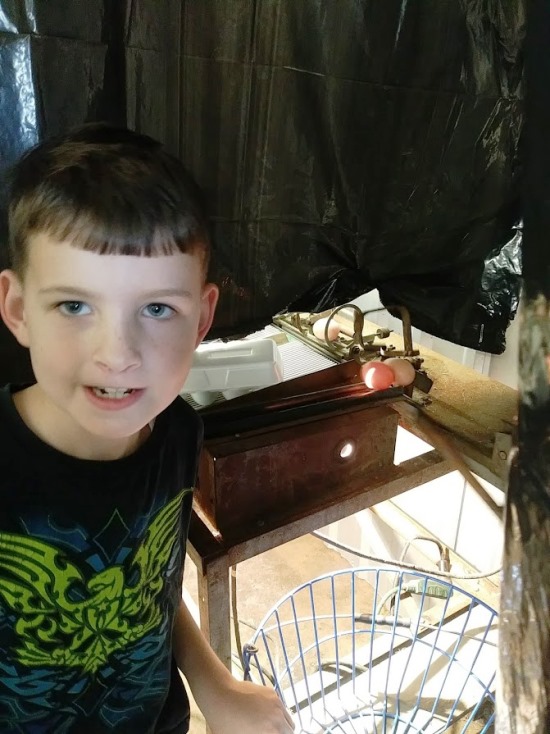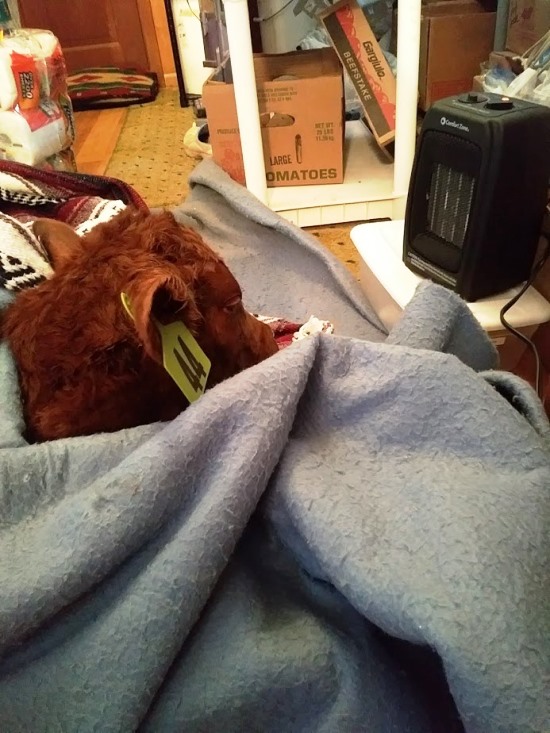Not gray hair, mind you. I’m not sure there’s a cure for that, especially when you run a crazy ranch like we do! 😉 I’m talking about something else…
As I cooked breakfast a couple of days ago, I noticed on the mostly-empty package of pork breakfast sausage I had thawed a few days prior, that the edges of the meat had gone gray. Some people might call it brownish. It was pork, so it was a very light pink to begin with, and that, mixed with a faint brown, really looked grayish to me more than anything. It was certainly not the pinkish color one normally encounters when first opening a pack of our sausage. I knew it wasn’t spoiled. It was only days old, I had thawed it in the fridge, and it smelled great—like clean, sagey pork sausage!
Having done pretty extensive chemistry studies in college, I knew it had only grayed up because of its exposure to air, and this speculation was confirmed by noticing that the gray was only at the open edge of the package, not within the bulk of the meat, or along the sealed edges of the clear packaging. This is called Oxidation.
You’ve seen oxidation plenty of times. You know how if you make a bowl of guacamole and put it in the fridge overnight, the top will turn a terrible icky brown color, but underneath it will still be a beautiful yellow-green?
That’s oxidation.
It’s a natural process we are all fighting (most of the time—sometimes oxidation is good!).
Oxidation is why we’re aging. It’s what makes our cars rust. It’s what makes our guacamole turn brown.
And it makes our meat turn gray-brown in the fridge, unless…
…unless we do something to stop it! But WHAT?
I know you’re super busy, and this is a BIG can of worms kind of topic, so I’m just going to boil it down for you.
Meat naturally oxidizes when exposed to air.
It goes from red (or pink) to brownish-gray. The meat industry has figured out that customers don’t want to buy brownish-gray meat, but they also don’t like buying frozen meat (which is WAY fresher than “fresh” meat), so they have a couple of practices in place to prolong the shelf life of “fresh” meat.
My little breakfast sausage experience this week reminded me that you might not know about some of these practices, and you might find it surprising if your perfectly-safe raw sausage or hamburger turns gray-brown before you use it all up.
Industry Practices to Keep Meat from Going Gray
1. Add preservatives.
Sodium nitrate is the most familiar example of color-preserving-agent, and it is used to make bacon a really pretty pink color, in spite of the fact that it’s smoked and “cured” (aged). If you were to smoke plain ol’ pork belly, it would turn gray-brown–like the color of a patty of cooked sausage or a cooked pork chop. Now it is true that some vegetables are high in natural nitrites, and so if you add something like celery juice to your bacon brine, it can accomplish the same thing, but using a naturally-produced ingredient rather than a man-made product. Voila. Pink (naturally) bacon!
Nitrate is probably on the less-scary end as far as artificial additives go, but things like BHT raise my eyebrows a little higher. You don’t see BHT in plain meat products very often, probably because added preservatives always have to be labeled (as far as I know). And adding stuff like BHT to hamburger might not fly among savvy shoppers, but those three little letters might slip by pretty easily if they’re surrounded by other more benign ingredients like sausage seasonings.
2. Feed arsenic to the animals.
Blech. I know. But it’s true. Commercial poultry companies have found that by feeding small amounts of organic (carbon-based) arsenic, the meat will turn out pinker and more appealing in appearance. No, the arsenic doesn’t all get pooped out like they originally thought. And no, they still haven’t officially banned it in the US. And yes, they feed the arsenic-laden chicken poop to cattle, even the “organic” ones. Not kidding. It’s scary out there, folks.
3. Douse the meat in carbon monoxide.
By now, you probably think I’m making this stuff up to scare you. I only wish it was so! They poison the meat?? Yep, pretty much. And the reason it works is the same mechanism by which it would poison your body—myoglobin (the stuff that makes meat look red) has a strong affinity for CO (carbon monoxide), much more so than for regular oxygen, so it grabs onto the CO molecules and hangs on for dear… death? Meat that has “bonded” with CO can’t oxidize in the normal way, so it stays bright red for a longer period of time.
The benefit in the meat industry, of course, is that the meat can remain unfrozen without turning colors for longer periods of time… even if it has already spoiled! The literature is scarce when it comes to safety of this practice, and of course no label is required because it’s not considered an “additive,” but rather a “processing step,” even though some package types may still contain actual CO gas. Consuming the meat has been declared GRAS (Generally Recognized As Safe) status, even though CO exposure has been linked with autism, and consuming meat exposed to CO does not have undetectable results.
Let’s get this straight. Meat packers are adding poison to food without labeling it because it’s poorly-researched effects are probably negligible. And they’re doing this, not to enhance safety or quality, but only to accomplish the appearance of those things by literally tricking the customer. And they’re doing it simply because people think it’s weird to buy frozen meat, but apparently they’re ok with not being aware that they’re buying meat that may have been sitting out for upwards of 2 or 3 weeks before purchase? Is this the kind of food production American consumers should be supporting?
It’s enough to give you gray hairs, isn’t it?
This is why it’s important to choose food producers that have your health in mind. Not just your dollars.
So how do we keep from going gray without poisons?
Well… it’s a pretty simple solution, really. We at Shady Grove Ranch keep the meat frozen. Meat products have a delightfully long “shelf” life in the freezer. And then after it thaws, well. It might just turn a little grayish-brown (ground meat in particular, since it has more surface area exposed to oxygen). If you practice safe thawing techniques, keep your fridge nice and cold, and wrap stuff up tightly if you don’t use it all right away, it should stay nice and pink until you cook it. It’s not going to hurt you if it turns a little grayish-brown due to oxidation. But you won’t have that problem because it’s so yummy, how can you wait any longer to eat it? 😉
Thanks for reading this far. We appreciate you investing in knowledge about how your food is produced!
Jerica
PS–In case you care to do more reading about this complex topic… And in case you want to order some meat that does not have arsenic, sodium nitrate, or carbon monoxide in it. 🙂









